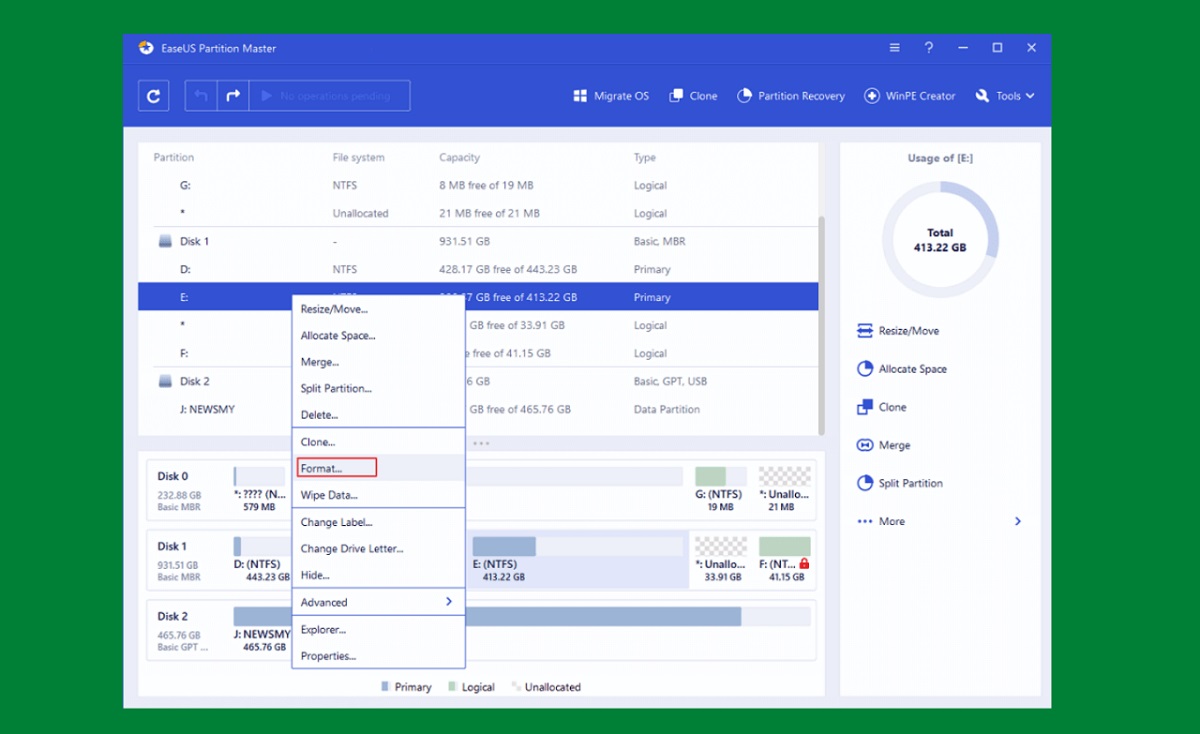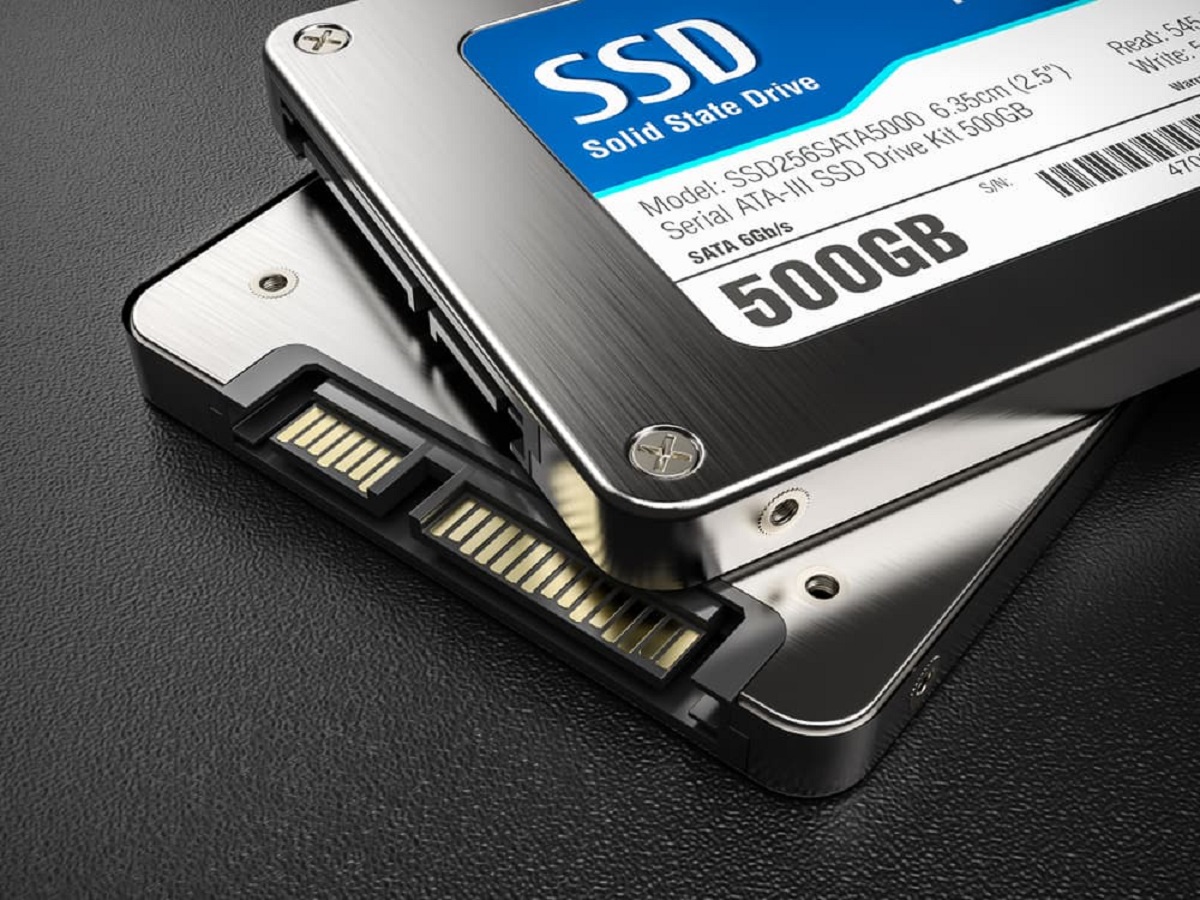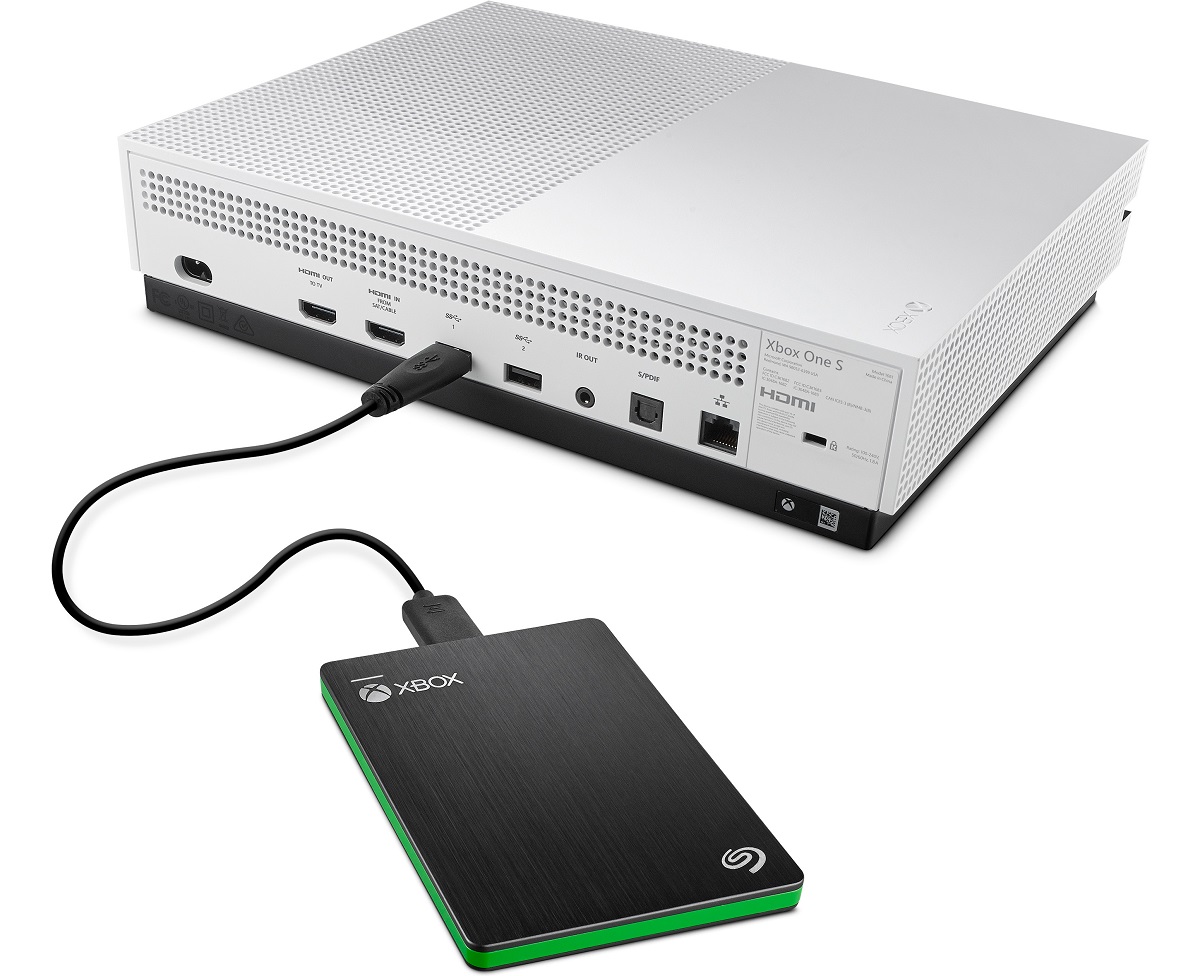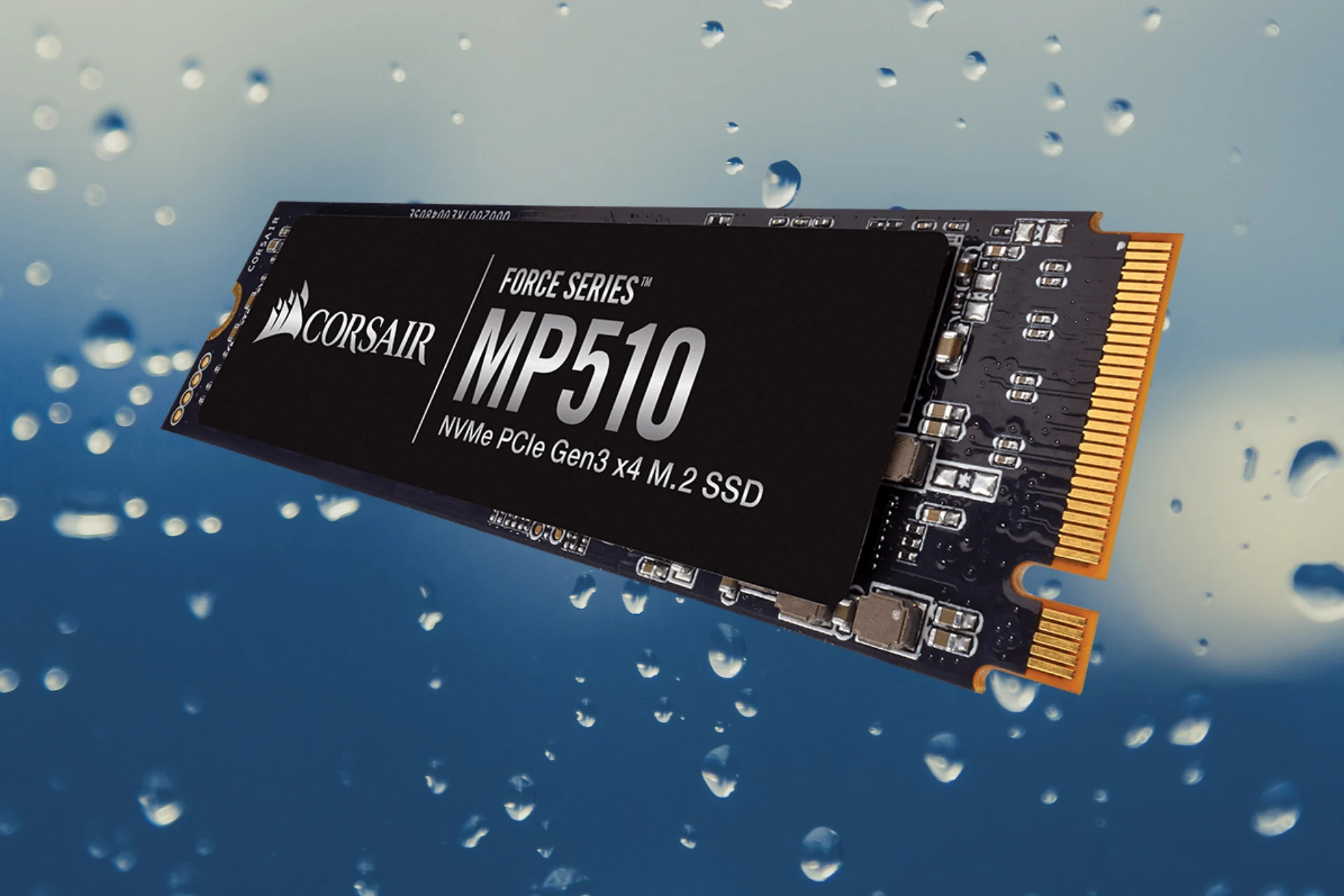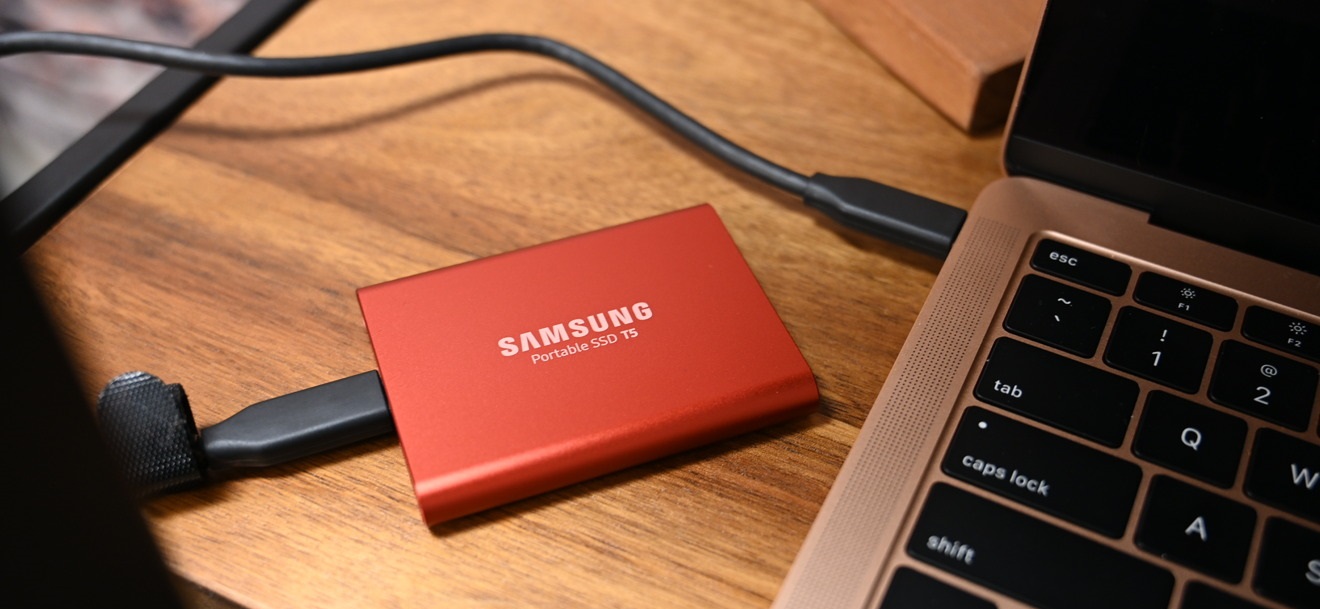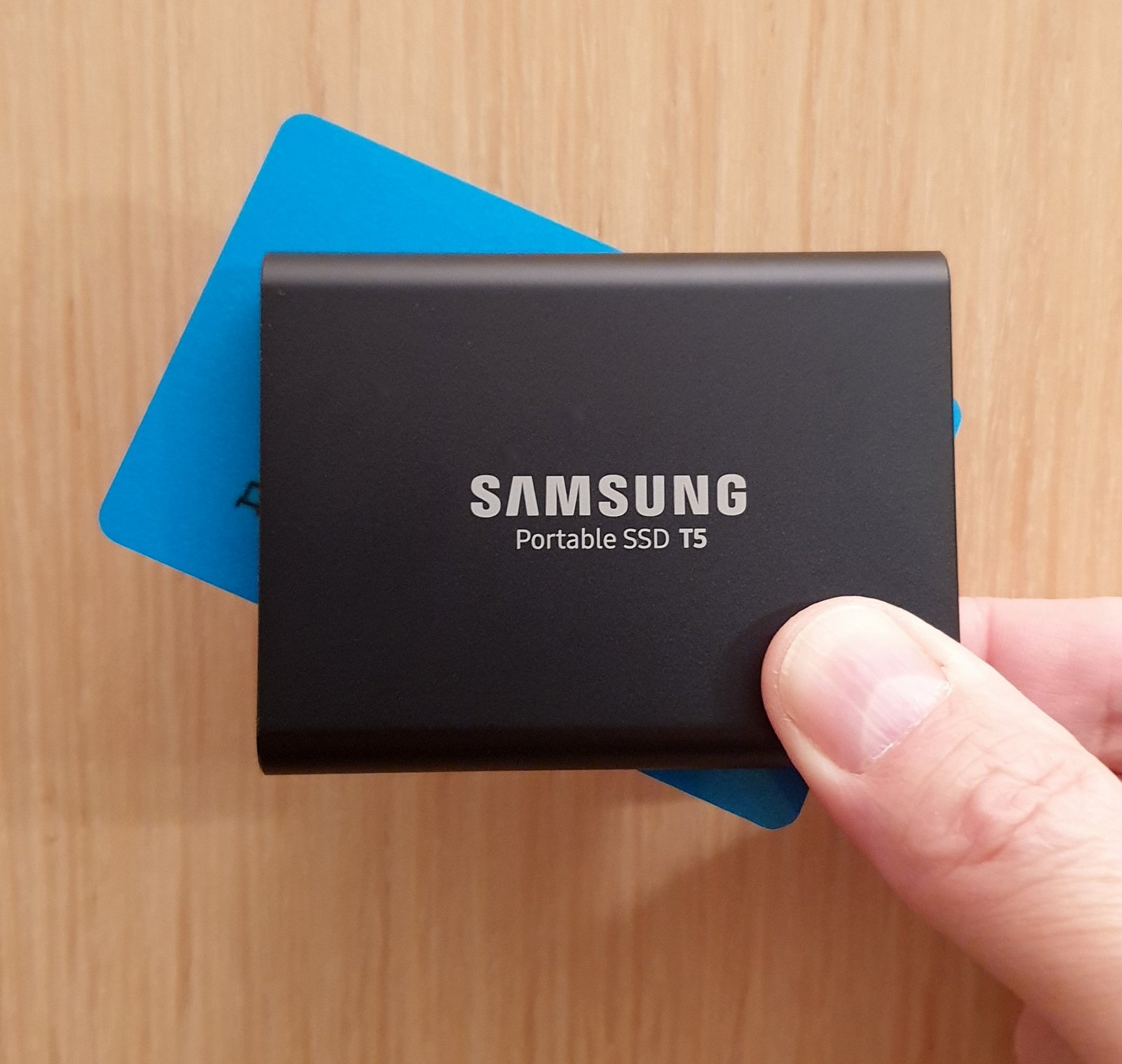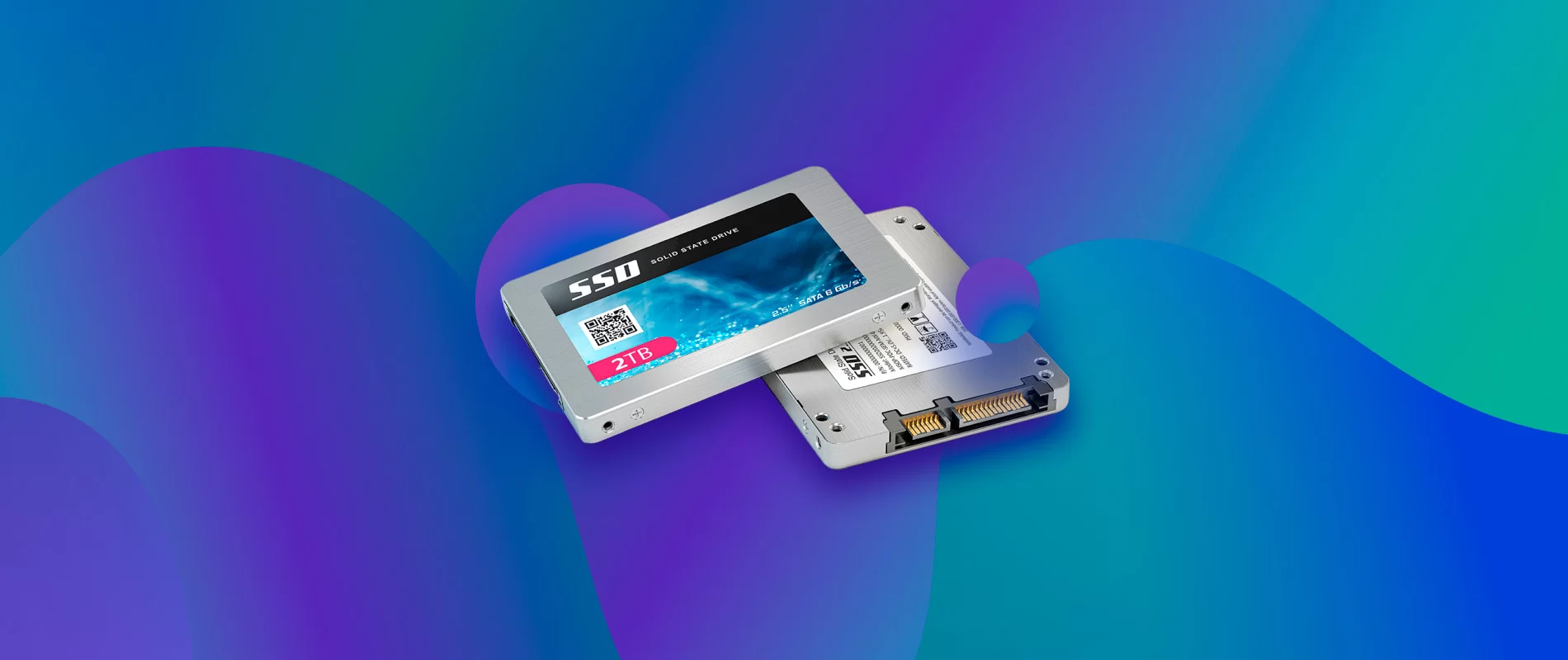Introduction
Solid State Drives (SSDs) have become increasingly popular in recent years due to their faster read/write speeds and improved performance compared to traditional hard disk drives. However, similar to any storage device, SSDs may require formatting at some point. Formatting an SSD involves preparing it for initial use or erasing all the existing data to start afresh.
While the process of formatting an SSD may seem straightforward, it is crucial to understand the reasons behind formatting and the various ways to accomplish it. This article will explore the significance of formatting SSDs, discuss precautions to take before formatting, and provide three different methods to format an SSD.
So, why should you format your SSD? There are several reasons to consider:
- Optimize Performance: Over time, an SSD can accumulate fragmented files and unnecessary data that may hinder its performance. By formatting the SSD, you can remove these fragments and start with a clean slate, optimizing its performance and improving overall system responsiveness.
- Prepare for Installation: If you have recently purchased a new SSD or plan to switch to a different operating system, formatting the SSD is essential to prepare it for the installation process. Formatting ensures that the SSD is ready to receive the new operating system and prevents any compatibility issues.
- Erase Sensitive Data: Formatting the SSD is an effective way to erase all existing data, making it virtually impossible for anyone to recover sensitive or confidential information. This is especially crucial if you are planning to sell or donate your SSD.
Before proceeding with the formatting process, there are a few precautions you should keep in mind to ensure a smooth experience and avoid any potential loss of data. These precautions include:
- Backup Data: Before formatting the SSD, it is vital to back up any important data that you want to retain. Formatting erases all the existing data on the SSD, and having a backup ensures that you don’t lose any valuable information.
- Check for Compatibility: Ensure that the formatting method you choose is compatible with your operating system and SSD model. Different methods may have specific requirements that need to be met for successful formatting.
- Verify Power Source: Make sure your device is connected to a stable power source or that the laptop battery is adequately charged. Interruptions during the formatting process can result in data corruption.
Now that we understand the importance of formatting and the precautions to consider, let’s explore the three different methods to format an SSD:
- Using the Windows Disk Management tool
- Using the Command Prompt
- Using third-party software
Why should you format your SSD?
Formatting an SSD may not be a task that you think about regularly, but there are several reasons why it can be beneficial to periodically format your SSD. Let’s explore these reasons:
1. Optimize Performance: Over time, as you use your SSD, it can become cluttered with fragmented files, temporary data, and unnecessary junk. This can lead to slower read and write speeds and decreased overall performance. By formatting your SSD, you can start with a clean slate, removing all the accumulated fragments and ensuring that your SSD operates at its best performance level.
2. Prepare for a Fresh Start: Formatting your SSD is an excellent way to start fresh. Whether you’ve recently upgraded your operating system or want to reinstall it, formatting your SSD ensures that you have a clean installation without any remnants of the previous setup. It allows you to set up your system from scratch, ensuring optimal performance and stability.
3. Resolve Software Issues: If you are experiencing software-related issues such as crashes, errors, or slow performance, formatting your SSD can help resolve them. Sometimes, corrupt system files or conflicting software can cause these problems. By formatting the SSD and reinstalling the operating system and necessary applications, you can eliminate software-related issues and improve system stability.
4. Erase Sensitive Data: If you plan to sell, donate, or dispose of your SSD, it is crucial to format it to protect your sensitive data. Formatting is an effective way to erase all the existing data on your SSD, making it nearly impossible for anyone to recover the information. This ensures the privacy and security of your personal and confidential data.
5. Fix File System Errors: Over time, file system errors can occur on your SSD, leading to data corruption or loss. Formatting the SSD can help fix these errors and restore the file system to a healthy state. It ensures the integrity of your data and reduces the risk of data loss due to file system issues.
6. Remove Malware and Viruses: If your SSD is infected with malware or viruses, formatting it can be an effective way to eliminate these malicious elements. By formatting and reinstalling the operating system and applications, you can remove any traces of malware or viruses, ensuring a clean and secure system.
7. Upgrade SSD Firmware: Formatting your SSD also provides an opportunity to upgrade the firmware of your drive. SSD manufacturers often release firmware updates that bring performance improvements, bug fixes, and enhanced compatibility. By formatting and reinstalling the firmware, you can take advantage of these updates and optimize the performance and reliability of your SSD.
Overall, formatting your SSD offers several advantages, including optimizing performance, preparing for a fresh start, resolving software issues, erasing sensitive data, fixing file system errors, removing malware and viruses, and upgrading SSD firmware. It is essential to perform regular SSD formatting to maintain the efficiency and longevity of your storage device.
Precautions before formatting
Before proceeding with the formatting process for your SSD, it is important to take certain precautions to ensure a smooth experience and avoid any potential data loss. These precautions include:
1. Backup Data: Before formatting your SSD, it is crucial to back up any important data that you want to retain. Formatting will erase all the existing data on your SSD, and having a backup ensures that you don’t lose any valuable information. You can transfer your files to an external hard drive, cloud storage, or another storage device to ensure their safety.
2. Check for Compatibility: Different formatting methods may have specific requirements and compatibility with your operating system and SSD model. It is essential to ensure that the formatting method you choose is compatible with your system. Read the documentation or check the manufacturer’s website for any specific instructions or recommendations to avoid any issues during the formatting process.
3. Verify Power Source: It is crucial to ensure that your device is connected to a stable power source or that your laptop’s battery is adequately charged before initiating the formatting process. Any interruptions during the formatting process, such as sudden power loss or battery depletion, can result in data corruption or incomplete formatting. Taking this precaution will help ensure a smooth and uninterrupted formatting process.
4. Remove Drive Write Protection: Some SSDs may have a write protection mechanism enabled, which prevents any changes to the drive, including formatting. Before formatting, ensure that the write protection feature is disabled on your SSD. Consult the manufacturer’s documentation or look for instructions specific to your SSD model to disable this feature if necessary.
5. Verify Drive Health: It is recommended to check the health status of your SSD before formatting. There are various third-party software tools available that can analyze the health and performance metrics of your SSD, such as S.M.A.R.T (Self-Monitoring, Analysis, and Reporting Technology) diagnostics. If any issues are detected, it is advisable to address them before proceeding with the formatting process.
6. Have Installation Media Ready: If you are planning to reinstall the operating system after formatting, ensure that you have the necessary installation media, such as a bootable USB drive or DVD, readily available. This will allow you to seamlessly reinstall the operating system after formatting without any delays or complications.
7. Read the Instructions: Each formatting method may have specific steps and requirements. It is essential to read and understand the instructions provided by the method you choose. Following the instructions accurately will help ensure a successful formatting process without any errors or complications.
By taking these precautions before formatting your SSD, you can minimize the risk of data loss, ensure compatibility, maintain a stable power source, disable drive write protection, check drive health, have installation media ready, and understand the instructions. These steps will help ensure a smooth and successful formatting process for your SSD.
Ways to format an SSD
When it comes to formatting an SSD, there are three primary methods you can use, depending on your preference and the available utilities:
1. Using the Windows Disk Management tool: This method utilizes the built-in Disk Management utility in Windows, which provides basic disk management functions, including formatting. To access this tool, right-click on the Start button, select “Disk Management” from the menu, locate your SSD, right-click on it, and choose the “Format” option. Follow the prompts to select the file system, allocation unit size, and volume label before initiating the formatting process. This method is convenient and suitable for most users, as it does not require any additional software.
2. Using the Command Prompt: If you prefer a command-line approach or want more advanced options, you can use the Command Prompt to format your SSD. Open the Command Prompt by searching for “cmd” in the Start menu, and then type the necessary command to format your SSD. The command syntax may vary slightly depending on your operating system. Remember to double-check the drive letter assigned to your SSD to avoid formatting the wrong drive. This method offers more flexibility and control but requires some familiarity with command-line interfaces.
3. Using third-party software: There are several third-party software programs available that offer more advanced features and additional formatting options. These programs often provide a user-friendly interface and a wide range of formatting capabilities. Some popular third-party software includes EaseUS Partition Master, MiniTool Partition Wizard, and AOMEI Partition Assistant. Simply download and install the software, locate your SSD, and follow the on-screen instructions to format it according to your needs. Third-party software is suitable for users who require advanced features and more control over the formatting process.
Each of these methods has its advantages and may vary in terms of ease of use, flexibility, and available options. Choose the method that best suits your needs and comfort level. Remember to take the necessary precautions and read the instructions or guidelines provided by the specific method before proceeding with the formatting process.
Formatting your SSD ensures optimal performance, prepares it for a fresh start, resolves software issues, erases sensitive data, fixes file system errors, removes malware and viruses, and upgrades SSD firmware. Therefore, selecting the appropriate method and performing regular formatting will help maintain the efficiency and longevity of your SSD.
Using the Windows Disk Management tool
The Windows Disk Management tool is a built-in utility that allows you to manage and format storage devices, including SSDs. Formatting your SSD using this tool is a straightforward process. Here are the steps to format your SSD using the Windows Disk Management tool:
1. Open Disk Management: Right-click on the Start button and select “Disk Management” from the menu. Alternatively, you can press the Windows key + X and choose “Disk Management” from the Power User menu that appears.
2. Locate your SSD: In the Disk Management window, locate your SSD. It will be listed under the “Disk Drives” section. Take note of the drive letter assigned to your SSD.
3. Right-click and select “Format”: Right-click on your SSD drive and select the “Format” option from the context menu. A new window will appear with formatting options.
4. Choose file system and allocation unit size: In the format window, select the desired file system for your SSD. The most commonly used file system for Windows is NTFS. You can also assign a volume label to your SSD for easy identification. Additionally, you can choose the allocation unit size. For most users, the default allocation unit size is recommended.
5. Select the format options: There are two options available for formatting: Quick Format and Full Format. The Quick Format option performs a faster format by skipping the process of checking for bad sectors on the SSD. The Full Format option checks for bad sectors and provides a more thorough formatting process. Choose the option that best suits your needs. If the SSD is new or has been previously formatted without issues, the Quick Format option is usually sufficient.
6. Start formatting: Once you have selected the desired format options, click on the “OK” button to start the formatting process. A warning message may appear, informing you that all data on the SSD will be erased. Double-check that you have backed up any important data before proceeding.
7. Wait for the formatting to complete: The time required for the formatting process will depend on the size of your SSD and the selected format options. During the process, the Disk Management tool will display a progress bar. Once the formatting is complete, you will see a message indicating that the process was successful.
Formatting your SSD using the Windows Disk Management tool is a reliable and convenient method. It does not require any additional software and provides basic formatting functionality. However, keep in mind that this method may not offer advanced features or specialized formatting options available in third-party software.
By following these steps, you can easily format your SSD and ensure that it is ready for use with your desired file system and settings.
Using the Command Prompt
If you prefer a command-line approach or need more advanced options for formatting your SSD, you can use the Command Prompt in Windows. Here are the steps to format your SSD using the Command Prompt:
1. Open Command Prompt: Press the Windows key + R to open the Run dialog box. Type “cmd” and press Enter to open the Command Prompt.
2. List available disks: In the Command Prompt window, type “diskpart” and press Enter. Then, type “list disk” and press Enter to view a list of all available disks on your system. Identify your SSD based on its size and other information.
3. Select the SSD: Type “select disk X” (replace X with the number corresponding to your SSD) and press Enter. This command selects your SSD as the active disk for further operations.
4. Clean the SSD (optional): If you want to remove all existing partitions and data on your SSD, you can use the “clean” command. Type “clean” and press Enter. Be cautious, as this command will erase all data on the selected SSD.
5. Create a new partition: To create a new partition on your SSD, type “create partition primary” and press Enter. This command creates a primary partition on your SSD.
6. Select the new partition: Type “select partition 1” and press Enter. This command selects the newly created partition on the SSD.
7. Format the partition: To format the selected partition on your SSD, type “format fs=ntfs quick” and press Enter. This command formats the partition using the NTFS file system with quick formatting. Alternatively, you can replace “ntfs” with “fat32” or other supported file systems.
8. Assign a drive letter: To assign a drive letter to the formatted partition, type “assign letter=X” (replace X with the desired drive letter) and press Enter. This command assigns the specified drive letter to the partition, allowing you to access it in File Explorer.
9. Exit DiskPart: Type “exit” and press Enter to exit the DiskPart utility.
The Command Prompt method provides more advanced options and allows for more precise control during the formatting process. However, it requires familiarity with the command-line interface and careful attention to the commands entered. Be cautious while using the Command Prompt, as incorrect commands can lead to unintended consequences or data loss.
By following these steps, you can format your SSD using the Command Prompt and customize the formatting options according to your needs.
Using third-party software
Another way to format your SSD is by utilizing third-party software. There are various software programs available that offer advanced features, additional formatting options, and a user-friendly interface. Here are the general steps to format your SSD using third-party software:
1. Choose a reliable third-party software: Research and select a reputable third-party software program that suits your needs. Some popular options include EaseUS Partition Master, MiniTool Partition Wizard, and AOMEI Partition Assistant. Download and install the chosen software on your computer.
2. Launch the software and locate your SSD: Open the installed software and locate your SSD within its interface. Most software programs provide a clear display of all connected storage devices, making it easy to identify your SSD.
3. Select your SSD and choose the formatting option: With your SSD selected, look for the formatting option within the software. It might be labeled as “Format,” “Partition,” or something similar. Click on this option to proceed with formatting.
4. Configure formatting settings: Depending on the software, you might have various formatting options to choose from. You can typically select the file system (such as NTFS or FAT32), allocation unit size, and volume label. Adjust the settings according to your preferences or leave them at the default values.
5. Start the formatting process: After configuring the formatting settings, click on the “Start” or “Format” button to initiate the process. The software will begin formatting your SSD according to the specified settings. Depending on the size of your SSD and the chosen options, the formatting process may take some time.
6. Monitor the progress: The third-party software will display a progress bar or percentage indicator to track the formatting progress. Some software programs offer additional features like the ability to check for bad sectors or view real-time performance metrics during the formatting process.
7. Complete the formatting: Once the formatting process is complete, the software will display a notification or prompt indicating that the SSD has been formatted successfully. You can close the software and proceed to use your formatted SSD.
Using third-party software offers more advanced options and flexibility compared to the built-in tools provided by the operating system. These software programs often have user-friendly interfaces and allow for more precise control over the formatting process. However, it’s important to choose a reliable and trusted software from reputable sources to ensure the security of your data and system.
By following these steps and using third-party software, you can format your SSD with ease and take advantage of the additional features and formatting options provided by the software program you choose.
Steps to format an SSD using Windows Disk Management tool
Formatting an SSD using the Windows Disk Management tool is a straightforward process. Here are the steps to format your SSD using this built-in utility:
1. Open Disk Management: Right-click on the Start button and select “Disk Management” from the menu. Alternatively, press the Windows key + X and choose “Disk Management.”
2. Locate your SSD: In the Disk Management window, locate your SSD. It will be listed under the “Disk Drives” section. Make sure to identify the correct SSD to avoid formatting the wrong disk.
3. Right-click and select “Format”: Right-click on your SSD drive and select the “Format” option from the context menu. A new window will appear with formatting options.
4. Specify formatting details: In the formatting window, choose the desired file system (such as NTFS, FAT32, or exFAT) for your SSD. Select the allocation unit size and provide a volume label for identification purposes.
5. Choose quick or full format: You’ll have the option to perform a quick format or a full format. If you want a faster formatting process, select “Quick Format.” If you want a more thorough format that checks for bad sectors, select “Full Format.” Note that the full format takes longer to complete.
6. Initiate the formatting: Click on the “OK” button to start the formatting process. A warning message will appear, informing you that all data on the SSD will be erased. Double-check that you have backed up any important data before proceeding. Click “OK” to confirm and begin the formatting process.
7. Monitor the formatting progress: The Disk Management tool will display a progress bar indicating the formatting progress. Depending on the size of your SSD and the selected options, the formatting process may take some time. Be patient and allow the tool to complete the formatting process.
8. Complete the formatting: Once the formatting is complete, you will receive a notification indicating that the process was successful. Your SSD is now formatted and ready to use.
It is important to note that formatting erases all data on the SSD. Ensure that you have backed up any necessary files before proceeding with the formatting process. Additionally, double-check that you have selected the correct SSD to avoid formatting the wrong disk.
By following these steps, you can easily format your SSD using the Windows Disk Management tool and customize the formatting options to suit your needs.
Steps to format an SSD using Command Prompt
If you prefer a command-line approach or need more advanced options for formatting your SSD, you can use the Command Prompt in Windows. Here are the steps to format your SSD using the Command Prompt:
1. Open Command Prompt: Press the Windows key + R to open the Run dialog box. Type “cmd” and press Enter to open the Command Prompt.
2. Launch DiskPart: In the Command Prompt window, type “diskpart” and press Enter. This command opens the DiskPart utility for disk-related operations.
3. List available disks: In the DiskPart window, type “list disk” and press Enter. This command displays a list of all available disks on your system. Identify your SSD based on its size and additional information. Make note of the disk number assigned to your SSD.
4. Select the SSD: Type “select disk X” (replace X with the disk number corresponding to your SSD) and press Enter. This command selects your SSD as the active disk for further operations.
5. Clean the SSD (optional): If you want to remove all existing partitions and data on your SSD, you can use the “clean” command. Type “clean” and press Enter. Be cautious, as this command will erase all data on the selected SSD.
6. Create a new partition: To create a new partition on your SSD, type “create partition primary” and press Enter. This command creates a primary partition on your SSD.
7. Select the new partition: Type “select partition 1” and press Enter. This command selects the newly created partition on the SSD.
8. Format the partition: To format the selected partition on your SSD, type “format fs=ntfs quick” and press Enter. This command formats the partition using the NTFS file system with quick formatting. You can replace “ntfs” with “fat32” or other supported file systems, depending on your needs.
9. Assign a drive letter: To assign a drive letter to the formatted partition, type “assign letter=X” (replace X with the desired drive letter) and press Enter. This command assigns the specified drive letter to the partition, allowing you to access it in File Explorer.
10. Exit DiskPart: Type “exit” and press Enter to exit the DiskPart utility.
The Command Prompt method allows for more advanced options and greater control over the formatting process. However, be cautious while using the Command Prompt, as incorrect commands can lead to unintended consequences or data loss. Double-check your commands and ensure that you have selected the correct SSD to format.
By following these steps and using the Command Prompt, you can format your SSD with precision and customize the formatting options to meet your specific requirements.
Steps to format an SSD using third-party software
Using third-party software to format an SSD provides advanced features, additional options, and a user-friendly interface. Here are the general steps to format an SSD using third-party software:
1. Choose a reliable third-party software: Research and select a reputable third-party software program that suits your needs. Popular options include EaseUS Partition Master, MiniTool Partition Wizard, and AOMEI Partition Assistant. Download and install the chosen software on your computer.
2. Launch the software and locate your SSD: Open the installed software and identify your SSD within its interface. Most software programs display a list of connected storage devices, making it easy to identify your SSD based on its size and other details.
3. Select your SSD and choose the formatting option: With your SSD selected, look for the formatting option within the software. It may be labeled as “Format,” “Partition,” or something similar. Click on this option to proceed with formatting.
4. Specify formatting settings: Depending on the software, you can now choose the desired file system (NTFS, FAT32, exFAT, etc.), allocation unit size, and volume label. Adjust the settings according to your preferences or leave them at the default values.
5. Start the formatting process: After configuring the formatting settings, click on the “Start” or “Format” button to initiate the process. The software will begin formatting your SSD based on the specified settings. Depending on the size of your SSD and the chosen options, the formatting process may take some time.
6. Monitor the formatting progress: The third-party software typically provides a progress indicator, such as a status bar or percentage completed. You can monitor the progress of the formatting process within the software’s interface. Some software programs may also offer additional information, such as estimated time remaining or real-time performance metrics.
7. Complete the formatting: Once the formatting process is complete, you will receive a notification or prompt indicating the successful completion. At this point, your SSD is formatted and ready to be used.
Using third-party software offers the convenience of advanced features and greater control over the formatting process. These software programs often provide a user-friendly interface, making it easier to format your SSD based on your specific preferences and requirements.
By following these steps and utilizing third-party software, you can format your SSD with confidence, taking advantage of the additional features and formatting options provided by the software program you have chosen.
Conclusion
Formatting your SSD is an essential process that can optimize its performance, prepare it for a fresh start, resolve software issues, erase sensitive data, fix file system errors, remove malware and viruses, and upgrade SSD firmware. Whether you use the built-in tools like the Windows Disk Management tool and Command Prompt or opt for third-party software, the aim is to achieve a clean and efficient SSD.
Before formatting, it is crucial to take precautions such as backing up important data, ensuring compatibility of the chosen method, verifying the power source, removing drive write protection, checking drive health, having installation media ready, and reading instructions carefully. These precautions will ensure a smooth and successful formatting process without any unintended data loss or complications.
The Windows Disk Management tool provides a user-friendly interface and basic formatting functionality, making it convenient for most users. The Command Prompt, on the other hand, offers more advanced options and precise control over the formatting process for users familiar with command-line interfaces.
If you require advanced features and additional formatting options, third-party software is a viable option. Choose reputable software from trusted sources to ensure the security of your data and system. These software programs often provide a user-friendly interface, allowing you to format your SSD based on your specific requirements and preferences.
By following the steps outlined in this article, you can easily format your SSD using different methods, depending on your needs and level of expertise. Remember to back up your data, choose the appropriate method, and be cautious throughout the process to ensure a successful formatting experience.
Regularly formatting your SSD, as needed, will help maintain its efficiency and longevity, ensuring optimal performance and storage capabilities. Keep your SSD running smoothly and enjoy the benefits of a clean and optimized storage solution.







